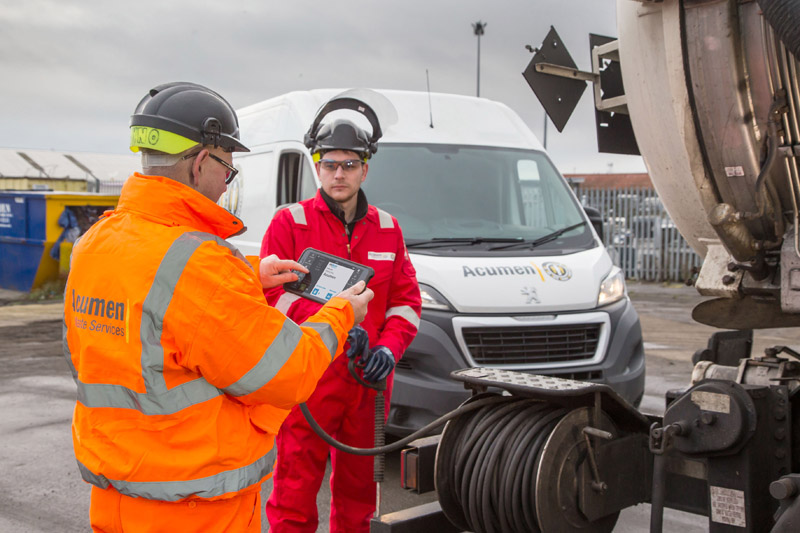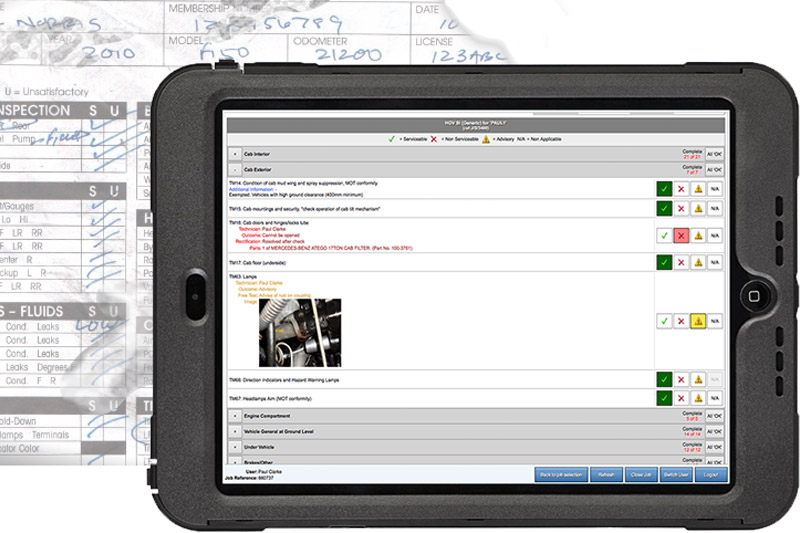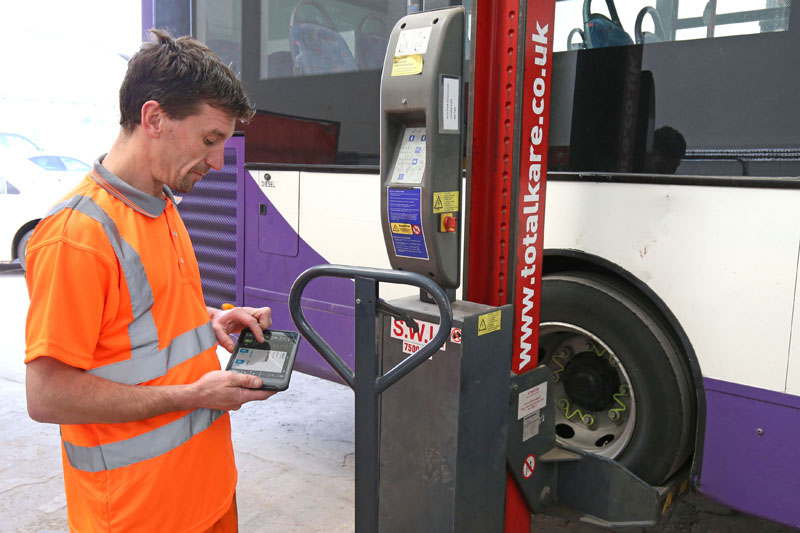
There is growing demand from fleets for on-site inspection services. Sharon Clancy, CVW’s Consulting Editor, takes a look at what’s involved.
Fleets that have outsourced fleet maintenance to third-party contractors often demand on-site routine inspections where possible. This reduces both downtime and the cost of taking vehicles to an independent workshop, hence the growth of mobile inspection services – from tail-lifts to tyres.
Some service companies specialise in offering nationwide mobile servicing, while full-service workshops may have a single or several technicians working primarily at customer sites.
Fleets may welcome the benefits of mobile servicing, but they also want those mobile technicians to be able to provide the same level of real-time compliance offered by a bricks-and-mortar workshop.
Electronic record-keeping as proof of compliance is really taking off, and workshops need to keep pace, which means keeping those mobile technicians in the digital loop. This can be done by using smartphones and tablets that are connected to workshop management systems to record work done and update vehicle history files. The days of technicians recording work on paper sheets and updating records when back at base are increasingly seen as old-hat; a sign of an outdated workshop offering less-than-great customer service. Mobile technicians are the face of the company – equipping them with tablets or smartphones to conduct inspections creates a better, more professional impression than a pen and paper.
Up-to-date fleet customers have invested in technology that allows them to schedule deliveries efficiently and track vehicle location throughout the day to monitor whether promised delivery times are being adhered to. They expect the same efficiency from their service providers. If a technician is due at 4pm but has been delayed, they want to be kept informed; real-time communication and electronic records are key.

Vehicle tracking and telematics
Sending out your mobile technicians for the day without any feedback means you are in the dark if the technician is late for a planned visit. Knowing what is happening allows you to be proactive and inform the next customer of the delay – not leaving it to the technician to apologise when they do eventually arrive.
Tracking the location of your mobile service vans can deliver benefits and is easy to implement. Internet-based platforms keep upfront costs down, and the tracking device itself simply plugs into the OBD connector on the van.
Tracking system software displays vehicle locations on a digital map, so you know at a glance exactly where your technicians are. For example, you can set up automatic alerts with geo-fences – electronic perimeter alerts that flag up when a vehicle enters and leaves an area. Managers don’t have to interrupt technicians to ask where they are. In the event of a customer emergency, you’ll know exactly where the nearest technician is. Some systems allow drivers to log on and off, so private and business mileage is separated automatically, as is driving time. This makes compliance with HMRC rules on private and work mileage much easier to manage.
While 12-month contracts are typical, Trakm8 Prime has introduced a 30-day rolling subscription for £7.99 per month. “Our new pricing structure and rolling contract ensures that customers are not tied into long-term, restrictive deals, but retain their freedom and flexibility,” said Nickie Hunt- Mason, Director of Direct Sales at Trakm8.

Job scheduling
The more mobile technicians a workshop or mobile service specialist company employs, the greater the complexity workload planning becomes. “It’s difficult for mobile maintenance providers to forecast jobs in advance, as many vehicle maintenance jobs arise from traffic incidents or unforeseen issues,” pointed out Derek Bryan of mobile workforce management specialist, Verizon Connect.
Derek continued, “As a result, workshops often battle to ensure hours are allocated effectively and efficiently – if jobs aren’t completed properly, some technicians can become over-burdened and clock up overtime, while others may remain underutilised. A mobile workforce management platform can highlight which technicians are available and represent the most efficient option for customers with vehicles needing assistance or inspections.”
Routing and planning
Congestion cost the UK economy £8bn last year, and it’s an increasing problem for businesses that need to be out on the road, including mobile vehicle technicians. Bryan concluded, “Telematics platforms can provide mobile maintenance providers with near realtime analytics that allow them to plan the best routes beforehand and establish which technicians out in the field are best placed to take a job. The technology then tracks the location of the technician’s vehicle once it’s on the road and can re-route automatically if road conditions change. With near real-time visibility over service vehicles, maintenance providers can quickly respond to customer queries if unexpected eventualities do arise, helping to keep customers satisfied.
First-time fix
Integrating parts inventories with vehicle maintenance schedules help ensure technicians have the right parts on board to complete the job first-time, which is so important for mobile servicing efficiency.

Mobile workforce management
Mobile workforce management is the nextstep up from simply tracking your technicians. Workforce management specialist Big Change elaborated, “Mobileworkforce management is the automation of the end-to-end workflow and operations,replacing manual planning and paper job forms with dynamic electronic scheduling.
“By integrating with existing office systems such as workshop management, vehicle history files and accounting, it’s possible to create a 360⁰ picture.
“Once you have the data about how mobile service is performing, it’s possible to analyse what changes can be made to improve efficiency and customer service, whether that’s one technician taking longer than another to do the same task – perhaps indicating a skills gap – or if the time allowed at a site is enough to complete the work.”
Big Change calculates that companies can potentially save up to eight hours of admin time per worker, per month, save 10 hours in travel time, and an extra four service jobs per technician.
So, investment in some mobile technology can lead to increases in efficiency, improved customer service and cost-savings. Isn’t that worth considering?








